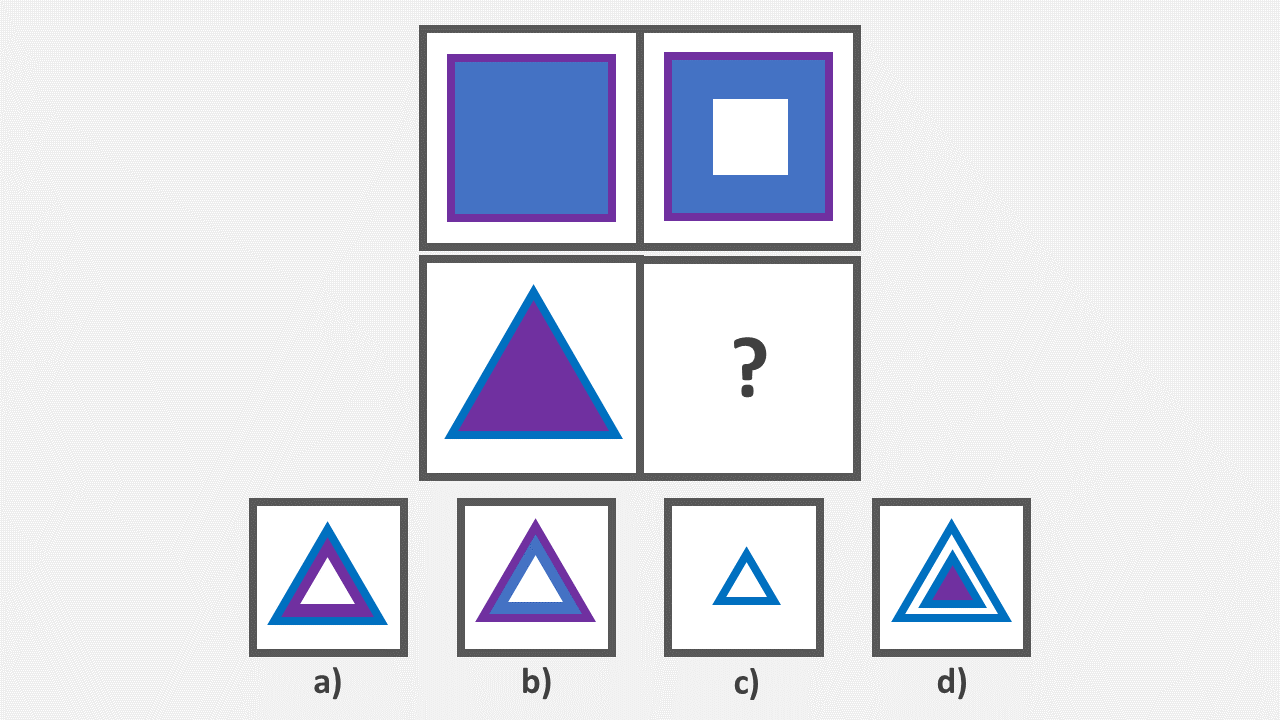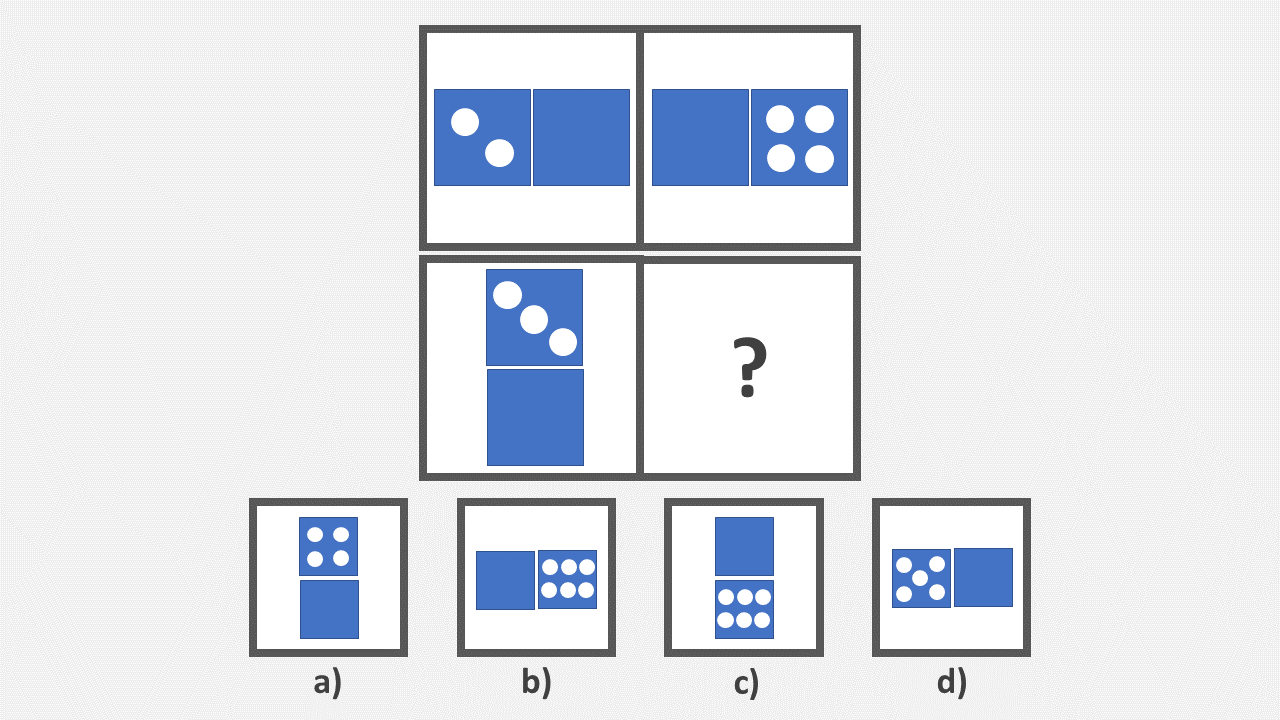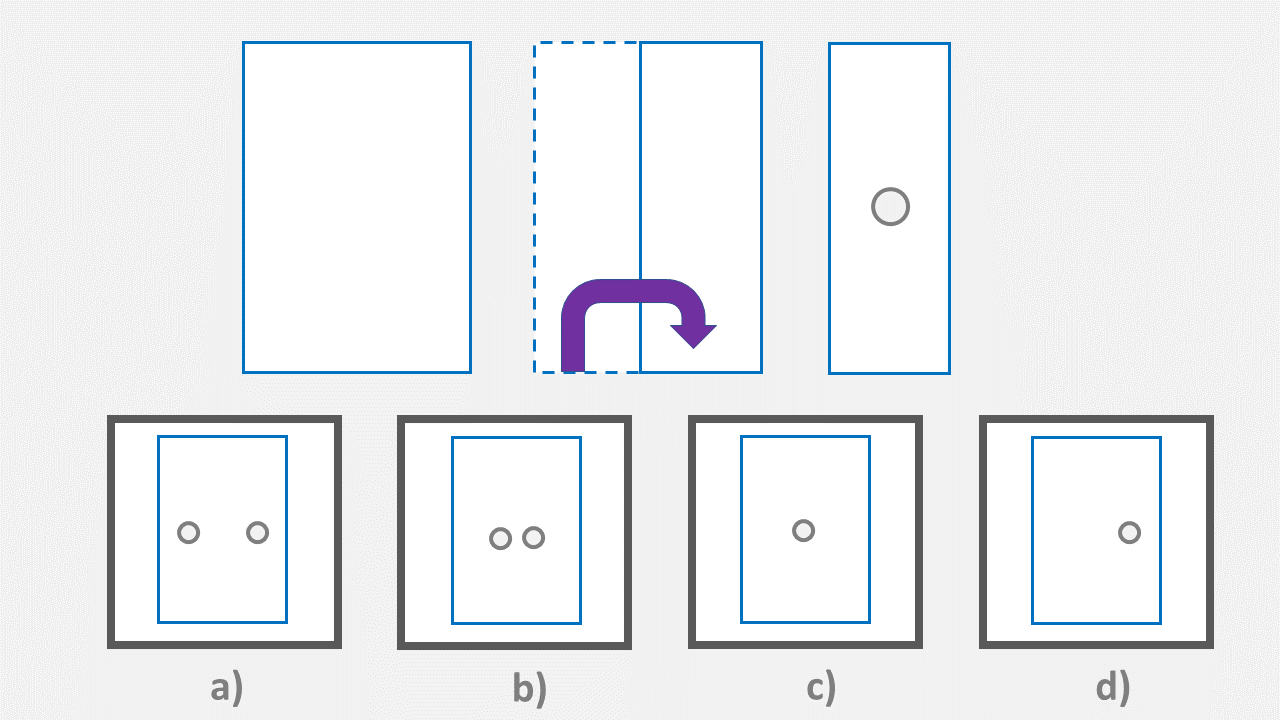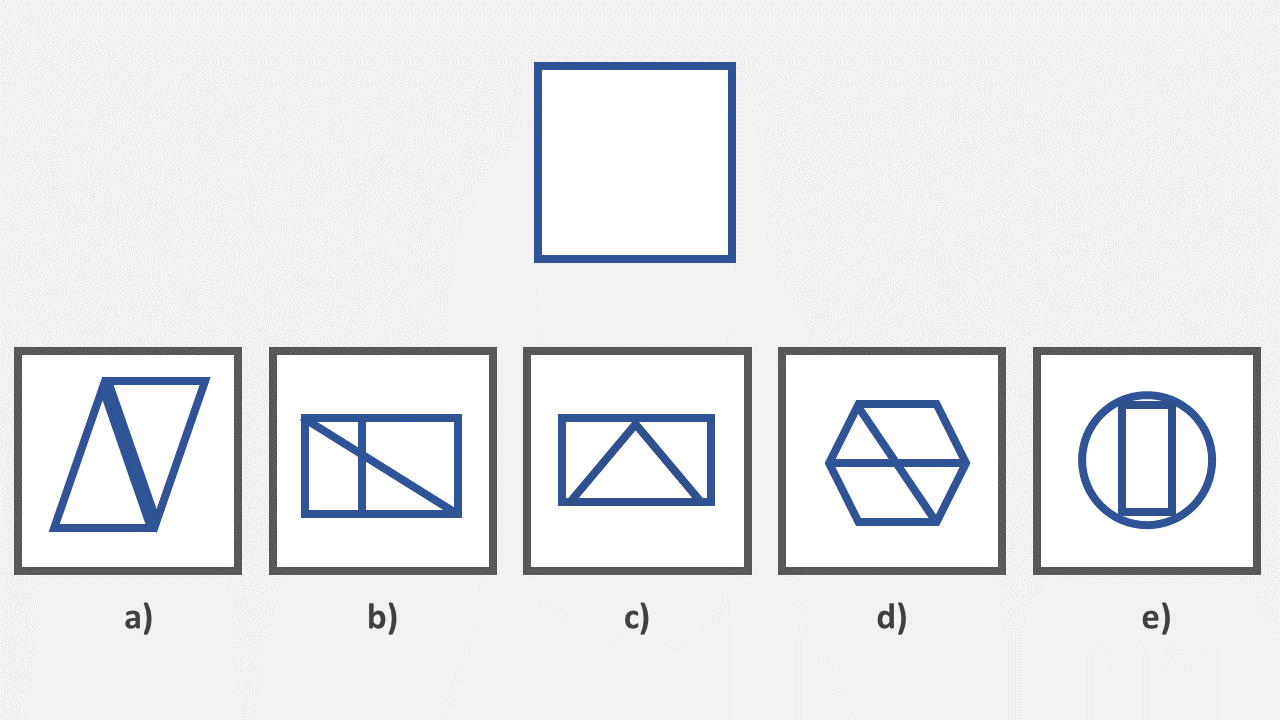How to Pass the CAT4 Level B Test in 2025 (Guide and Tips)
Updated July 16, 2024
- What Is the CAT4 Level B Test?
- What Does the CAT4 Level B Contain?
empty
empty
empty
empty
- How Is the CAT4 Level B Structured?
empty
empty
empty
- How Is the CAT4 Level B Scored?
empty
empty
empty
- How to Prepare for the Level B CAT4 Test in 2025
- Final Thoughts
What Is the CAT4 Level B Test?
The CAT4 tests are cognitive aptitude tests that assess academic strengths and weaknesses.
It operates from Level A up to Level G, and is for secondary school student’s in the UK and Ireland.
Created by GL Assessment, they are used to monitor cognitive development and determine individual learning styles.
This cognitive abilities test give an insight into a student’s strengths throughout the school year in question.
They can also assist educators with the adaptation of their teaching strategies. This way, the abilities and potential of each student can be developed.
The CAT4 Level B test is the version generally used for US students in grade four between ages nine and 10. In the UK, this is a year five class.
The CAT4 exam is an assessment test with multiple choice test questions.
There are 12 levels of CAT4 tests in total. Although similar in style and structure to other CAT4 levels, the Level B test is designed specifically for grade four students.
This means that the level of difficulty is slightly increased from the Level A test.
With each level, there is an overlap of difficulty to ensure all abilities at each age range are accounted for.
The CAT4 Level B test can be administered as a digital or paper edition. The instructions for completing the test are delivered orally.
What Does the CAT4 Level B Contain?
The Level B test contains four main sections, or batteries, of areas that are tested.
These are:
- Verbal reasoning
- Non-verbal reasoning
- Quantitative reasoning
- Spatial reasoning
Let's look at some sample questions of what to expect in each section.
Practice Cat4 Level B with TestHQ
CAT4 Level B Verbal Reasoning
This section targets verbal cognition abilities. Questions are focused on verbal analogies and verbal classification.
These assess a student's ability to think with words. The results of this battery can predict future academic success.
CAT4 Level B Sample Questions
1. Subway, Car, Airplane, Bus, Train
Which word is similar to the words listed above?
a) Road
b) Taxi
c) Travel
d) Walking
e) Drive
2. Big → Small : Fast → ?
a) Speed
b) Large
c) Far
d) Slow
e) Biggest
CAT4 Level B Non-Verbal Reasoning
The non-verbal reasoning section includes questions involving figure matrices and figure classification.
These are diagram-based questions using shapes that assess critical thinking and problem-solving.
CAT4 Level B Sample Questions
1. Choose the picture that belongs with the bottom picture in the same way that the pictures on top belong together.

2. Choose the picture that matches the picture at the bottom in the same way that the pictures at the top match.

CAT4 Level B Quantitative Reasoning
This section focuses on numerical cognitive ability. These questions determine a student’s ability to understand number analogies and number series.
The skills assessed here are not only relevant to math. They apply to other areas such as technology and science.
Students are able to use a pencil and a piece of rough paper for these questions if they require.
Sample Questions CAT4 Level B
1. 30 → 10 | 18 → 6 | 12 → ?
a) 2
b) 10
c) 21
d) 6
e) 4
2. What is the next number in the sequence?
58, 52, 46, 40, ?
a) 34
b) 31
c) 30
d) 46
e) 36
If you want 12-month access to all the practice resources for this test, our partner TestHQ.com offers a Premium Membership.
Premium Membership gives you access to all the TestHQ resources for the next 12 months. You will also get two separate accounts, which can be very helpful if you have two children preparing for their tests.
Get a Premium Membership with 12-month access
CAT4 Level B Spatial Reasoning
This section includes questions about shape and space. Students will need to perceive objects in three dimensions (3D) in their mind.
Questions prompt candidates to recognize and analyze figures by interpreting paper-folding diagrams and finding specific shapes in more complex designs.
CAT4 Level B Sample Questions
1. Choose the answer which matches what the paper will look like unfolded.

2. Below is your target shape. Which of the following five options contains this shape?


How Is the CAT4 Level B Structured?
The four subject batteries outlined above are structured slightly differently in the test.
The CAT4 Level B test consists of three parts. The quantitative battery is split between parts two and three.
The number of questions and timings for each part are:
CAT4 Level B Part One
- Figure classification – 24 questions in 10 minutes
- Figure matrices – 24 questions in 10 minutes
CAT4 Level B Part Two
- Verbal analogies – 24 questions in 8 minutes
- Verbal classification – 24 questions in 8 minutes
- Number analogies – 18 questions in 10 minutes
CAT4 Level B Part Three
- Figure analysis – 18 questions in 9 minutes
- Figure recognition – 18 questions in 9 minutes
- Number series – 18 questions in 8 minutes
Due to the length of the tests, each section is generally administered in separate sessions.
How Is the CAT4 Level B Scored?
The CAT4 Level B tests will initially generate a raw score. The raw score will state how many questions had correct answers in each section.
These raw scores are then moderated into three different normative scores. These are generated using a comparison of students in the same age group.
The three normative scores are:
Standard Age Score (SAS)
The average SAS score is set to 100. This allows a direct comparison to be made with students of the same age.
Achieving the same score for two different batteries shows they have done equally well on both.
Stanine Grade (ST)
This score relates to nine groups with the average stanine being five. The average corresponds to an SAS of between 97 and 103.
National Percentile Rank (NPR)
This value shows the percentage of students who have scored equal to or less than them. This refers to similar-aged students sitting the same CAT4 Level B test.
In an academic setting, the raw scores of the separate batteries will be used to inform the educational focus for each student.
The scores for the paper-based and digital versions are generated by computer. The difference is that scores for the online version can be accessed immediately.
Prepare Cat4 Level B with TestHQ
How to Prepare for the Level B CAT4 Test in 2025
Although the CAT4 Level B test is not assessing academic knowledge and learning, it is beneficial to prepare for it in advance.
Tests can feel daunting for young children. Adequate preparation can help to reduce this pressure.
Here are six step-by-step tips to help your child prepare:
Step 1. Practice Sample Questions
This is one of the most important tips. Having an understanding of the structure and format of the CAT4 Level B test will increase your child’s confidence.
A CAT4 practice test will help improve their CAT4 score.
They will be aware of the types of questions they will be presented with on the test day.
This will give them a sense of familiarity with the questions and an understanding of how to approach them.
The CAT4 Level B test is a timed test. Questions can only be answered within the strict time limit.
The time limit is necessary to measure the brain's processing speed. However, the timer can feel intimidating.
For this reason, it is a good idea to attempt some practice tests under timed conditions. Your child will be aware of the need to work through the questions at a steady rate.
Keep surroundings quiet and free from distractions. Adopting test-style conditions will prepare your child to focus and help develop their concentration.
Step 2. Integrate Study With Everyday Life
Preparing for the CAT4 Level B test should be fun. Make study a part of everyday life so your child remains enthusiastic about it.
One option is to download some educational apps. These can help with practicing certain skills.
Play word, number and shape games together. This is an interactive way of embedding verbal, numerical and spatial concepts.
Sit together and read books. Talk about what you are reading and the types of words. This will develop their ability to use verbal reasoning skills.
Take learning outside and visit different places. Museums and art galleries provide plenty of scope for different types of reasoning.
Step 3. Practice Test Techniques
Discuss the importance of reading questions carefully. Practice picking out keywords from sample questions to help them develop this skill.
Encourage them to pause and reflect on the question before selecting an answer.
Although the test is timed, they should not feel pressured to choose an option without thinking carefully about their answer.
If they are unsure of an answer, reassure them that they can take an educated guess.
To do this, practice the technique of eliminating answers that are definitely incorrect. Then select the best option from the remaining answers.
Some sections allow the use of paper and pencil for working out. Encourage them to do this for the quantitative reasoning practice questions so they realize how helpful it can be.
If your child is taking the paper-based version, explain the need to mark answers clearly on their answer book so they don't make any mistakes.
It is also recommended to create a study guide and participate in CAT4 test practice.
Step 4. Practice Problem Areas
As your child works through sample questions, monitor their progress. This will give you important insights into any problem areas that need extra attention.
For example, they might be struggling to visualize the spatial reasoning questions.
This can lead to frustration and a lack of confidence in their abilities. In this case, it would be wise to provide additional resources in this area to gently assist them.
Work with your child as they approach a question and ask them to explain their thinking. This will enable you to understand how best to help them improve their skills.
Perhaps they find the format of the test confusing. In this case, provide lots of examples and talk through how to tackle them.
Another idea is to practice recognizing simple patterns. Practicing pattern-spotting will make this skill easier in the test.
Step 5. Get Creative
Some of the questions presented in the CAT4 Level B test might seem unfamiliar or confusing.
One example is the paper folding and figure matrix questions.
Try and get creative with how to approach these questions. Get some paper and a hole punch so they can have practical experience with paper folding.
Create models from toy bricks or other construction materials. Look at these from different perspectives and try to spot shapes.
Another option is to draw pictures of complex shapes. Use bright colors and shade them in to help recognize shapes within them.
Write out different word sets on cards. Create a game by asking if they can find different ways to group them and explain how.
Step 6. Follow a Self-Care Routine
Throughout the test preparation time, emphasize the need for self-care.
Teach them some relaxation techniques; for example, slowing their breathing to calm nerves.
Some mindfulness practices can also be beneficial for clearing their mind and reducing any anxiety.
Children need to get a good night's sleep before test day. This will help them stay focused.
Provide a nutritious, balanced breakfast in the morning. This supplies energy to sustain them throughout the day.
Final Thoughts
CAT4 tests take a small snapshot of academic potential. They are one of many tools that educators can use to monitor a child's progress and abilities.
Remind your child that taking tests is nothing to worry about. Being fully prepared beforehand helps them feel secure about the experience overall.
It is important to encourage a growth mindset. No matter what score they achieve in the CAT4 Level B, this can always be improved upon. This builds their resilience and helps them move on to their next testing experience with confidence.
The CAT4 Level B test provides a detailed profile of each student. This is a valuable record that reveals strengths and weaknesses. This way, educators and parents can understand how to improve cognitive abilities moving forward.






